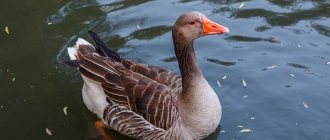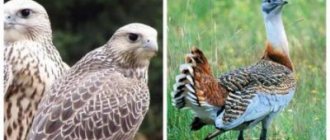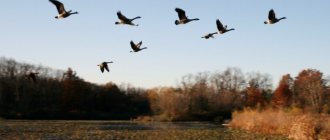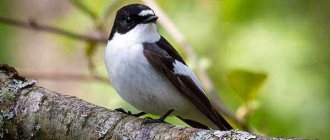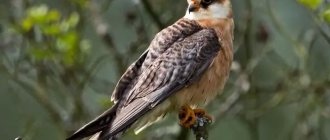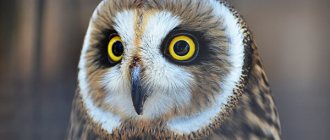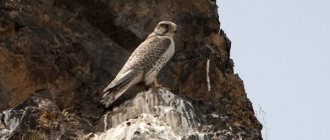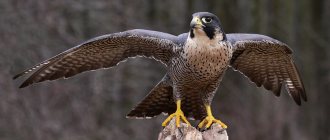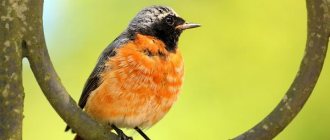Waterfowl: description, representatives and photos
Numerous orders of birds have adapted to a variety of environmental conditions. The water bodies of our planet have become a habitat and food source for waterfowl. Many of them can not only swim, but also dive well. Waterfowl are not in a separate order. They differ greatly in size and appearance, but have similar adaptation features to life on the water. Almost all representatives obtain food in their own way and rarely compete with each other in food.
Water-underwater, or diving birds
,712
Underwater, or diving, birds are very similar in appearance to waterfowl. This includes species from various orders: Charadriiformes, Copepods (cormorants, gannets), Loons, Coraciiformes ( kingfishers) , etc. All these are birds with a streamlined, laterally flattened body, paws set far back, and very dense feathers, which makes it easier to dive under water .
The wings of divers are relatively small and the weight of the pectoral muscles is reduced compared to non-divers. The center is shifted back, so, for example, in a grebe , only the head and the front part of the back are visible above the surface, while on land the bird “stands in a column.”
The most advanced divers lose the ability to fly - such as penguins and the Galapagos cormorant, as well as the now exterminated great auk. Penguins and bazaar inhabitants (guillemots, guillemots, auks) row their wings while swimming underwater. Cormorants, loons, and row only with their paws. Birds diving from flight stand apart - they can be called diving only conditionally, since they do not have the devices described above and, having a low density, can dive only by inertia. Terns , some pelicans, kingfishers, gannets, dippers, and sometimes gulls dive . In essence, all these birds belong to other life forms. Real divers spend up to 2 minutes under water (loon, merganser) and dive several tens of meters (guillemots, puffins ). The swimming speed of penguins is up to 10 m/s.
Pelican and Penguin
The flight of all diving birds is difficult, unmaneuverable, with frequent flapping of the wings. They take off with difficulty, running for a long time through the water. It has been noticed that loons, which occasionally nest in the forest zone, live on long narrow lakes and avoid round lakes of the same area, since on the latter they cannot run up to take off.
The food of aquatic underwater birds is fish, in pursuit of which they sometimes swim several tens of meters. Some piping birds retrieve food from the bottom. Auks, for example, dig into bottom sediments with their wide beaks, catching benthic animals. In cormorants, the beak ends in a hook for holding fish; in loons, grebes, and guillemots it is sharp, like a spear; the “teeth” of mergansers were mentioned above.
Great Grebe
Of the divers in the middle zone, perhaps only the great grebe . It is well distinguished by a sharp red beak and a red “hood” on a thin white neck. The bird is not very shy; it dives often and willingly, sometimes with chicks on its back. On small rivers with rubble and steep banks you can find kingfishers from the order Coraciiformes. It is easier to notice it in flight, when, whistling quietly and monotonously, it quickly sweeps over the water itself like a large emerald insect. Cormorants , unlike other divers, have feathers that get wet in the water, and after diving they are forced to dry them.
Cormorant
Share on social networks:
Category: Birds · Tags: Biology, Water, Bird, Birds
Adaptation of waterfowl to aquatic habitats
The bird does not drown thanks to its thick plumage and subcutaneous air sacs. The coccygeal gland, which is located near the tail, secretes fat. The bird applies it to its plumage using its beak. Lubricated feathers repel water, protecting birds from getting wet.
The bodies of waterfowl are dense, flattened in the dorso-ventral direction. This shape gives them stability on the water surface. Most diving species have evolved a thick subcutaneous layer of fat to help avoid hypothermia at low water temperatures. Waterfowl have developed skin membranes on their feet, increasing the overall area. This allows you to quickly move and maneuver in the water.
water birds
Series of books “First Acquaintance with Nature”, 1902 Author: N.V. Lviv
5545
In addition to birds that live and look for food on land, there are many birds that live on water. You are already familiar with some of these birds: you, of course, remember the water hen and the coot. Now we will get acquainted with swimming birds.
If you have never seen wild ducks, then you probably know domestic ones well. Although our domestic ducks have been tamed for a very long time, since time immemorial, they are still very similar to wild ones.
Look at the duck as it walks along the ground, swaying from one foot to the other. You will see that her front toes are webbed together. This is the swimming membrane that helps the duck swim. Notice when the duck lifts its leg, the membrane folds over like a fan; when she lowers her leg, the membrane stretches again.
Having reached the pond, she slides into the water and begins to row with her paws, moving one leg at a time, then the other. In clear water you can see that when a duck stretches its leg forward, the swim membrane folds, just as when walking; when she pushes back with her foot, the membrane tightens; Thanks to this, the duck moves forward.
Have you ever noticed that a duck comes out of the water completely dry? Her feathers do not get wet in water. This is because its feathers are lubricated with fat, which the duck extracts from a gland located on its tail. Look at the duck when it has just come out of the water. She presses her beak to the tail, takes the fat from there with the tip of the beak and then, running her beak along the feathers, lubricates them with fat. This is what makes the feathers waterproof.
Then pay attention to how the duck feeds. Swimming through the water, from time to time it capsizes head down and, having grabbed a tadpole or a water snail in the water, throws its head up and swallows the prey whole.
In shallow places, the duck puts its beak into the mud and looks for food there. Its beak is wide, flat and covered on top with soft, very sensitive skin, with the help of which the duck feels what is in the mud. The tip and edges of the beak are hard and sharp, so that the duck can bite off grass and aquatic plants with them, and along the edges of the beak, both above and below, sits a whole row of horny denticles. When the duck closes its beak, these denticles fit into the spaces between each other and form a sieve or strainer through which liquid food can be strained. Having filled its mouth with mud, the duck strains the water through a strainer and separates the edible from the inedible with its tongue.
We find the same webbed feet and the same serrated beak in geese, swans and all types of wild ducks.
If you have seen wild ducks, then you know how beautiful the drake is. Its head and neck are a shiny dark green; at the bottom of the neck there is a white collar; chestnut chest; on the wing there is a blue spot (mirror), surrounded by a white border, and on the tail there are shiny black feathers curved upward. When the drake molts in June, it loses its bright plumage and becomes like a duck, the same brownish-gray color. But in the fall it molts again and regains its bright plumage.
On the seashore you can see other swimming birds: gulls and cormorants. It's fun to watch seagulls fly over the sea, looking for prey, or swing while sitting on the waves. Sea gulls nest on coastal cliffs, and in the spring you can hear squeaks there, similar to the meowing of kittens. These are hatched gull chicks squeaking, demanding food.
Although sea gull chicks hatch sighted and covered with down, their nests are placed so high above the sea that they have to sit in the nest until their wings grow. In our common gulls, which nest in low places near rivers, the chicks go into the water and begin to swim soon after hatching.
There you will also see cormorants - large black birds - flying over the sea, stretching out their long necks and flapping their long, narrow wings. Then they sit on the waves, plunge into the water head down and emerge from there holding a fish in their beak.
Gulls and cormorants have the same swimming membrane on their legs as ducks. But their beak is not the same as that of ducks. They do not have teeth on their beak, which form a strainer in a duck. But gulls and cormorants do not dig in the mud with their beaks, like ducks, but feed on fish, and they have a sharp, strong beak with which they grab fish.
Now that you have become familiar with different birds, you can see for yourself that both the beak and legs of birds have different shapes and are adapted to the bird's lifestyle. Birds of prey have toes armed with strong, sharp claws that dig into prey. Woodpeckers have prehensile climbing legs: two toes point forward, two toes point back. Ducks and other swimming birds have a swimming membrane stretched between their toes. Chickens and pheasants have thick fingers with strong claws, which they use to rake the ground. Small songbirds have flexible, thin fingers, with which they deftly cling to thin twigs.
← Birds of Prey↑ Notes of a NaturalistEnemies of Birds →
Orders and species of waterfowl
Waterfowl include all or individual representatives of the following orders:
Charadriiformes
Charadriiformes are common in all natural areas and landscapes. This detachment is large in number, but heterogeneous. Birds of small and medium size most often lead a terrestrial-aquatic lifestyle. The color is dominated by dull shades. The food of most representatives is fish. Charadriiformes usually nest on the ground, and the chicks hatch with thick down.
Representatives: auk, ivory gull, plover, round-nose phalarope, tern, sea pigeon and puffin.
Crane-like
The order consists of birds whose appearance is significantly different from other waterfowl. It is considered a relict group. Representatives can be found all over the world, excluding Antarctica. The weight of birds ranges from 30 g to 15 kg. Crane-like creatures most often settle along the banks of water bodies, in dry and open spaces. They are practically not found in forest areas.
Mating dances are considered a characteristic feature. Representatives of the order nest on the ground. Most crane-like creatures prefer plant foods and small animals, such as frogs.
Representatives: water rail, coot, plume, common moorhen, small crake.
Penguin-like
They are considered a separate detachment that has ancient origins. All representatives live on the islands and coasts of the southern hemisphere, with the exception of the Galapagos penguin. Birds cannot fly, but they dive well. The largest species, the emperor penguin, can weigh up to 50 kg. The plumage is small but dense, so the birds have a well-developed fat layer.
Waterfowl
Ducks, geese and swans usually forage for food in the water and nest near it, many even mate while afloat. This way of life leaves a certain imprint on the birds: their plumage is dense and waterproof, and there are membranes between their toes. The differences between the species in this group, especially in size and coloration, are more obvious than the common features. The largest waterfowl are swans. Adults have a long neck and white plumage. Ducks are the smallest; geese are in the middle. Male ducks, such as the mallard drake, are very beautiful in their breeding plumage.
Short-legged and short-necked ducks are the smallest of waterfowl. During the mating season, drakes have bright plumage, sometimes with a rainbow shine (the male mallard's head actually sparkles). After the chicks hatch, they molt and become similar to females. In contrast, geese and swans look approximately the same throughout the year and there is almost no difference in plumage between the sexes.
Why do geese fly in a certain formation?
Some geese, such as the Hawaiian goose, do not make long flights, but most waterfowl are good flyers, and long-distance migrations are characteristic of many geese and ducks. The record here belongs to the blue-winged teal, which nests on the North American prairies and winters 10,000 km away in Southern Argentina. Gray geese flying in a wedge are a familiar sight. The individual that flies in front of everyone does the hardest work, overcoming air resistance, while those who are located on the left and right closer to the back of the wedge have it much easier. From time to time the leader is replaced by other individuals.
Married couples
Geese and swans develop a permanent special relationship within a married couple—a pair bond. Sometimes long-term, often lifelong, alliances are created. Partners express their feelings for each other by mutual cleaning of feathers and a special ritual: they lower their head and beak into the water. Among swans, the ceremony of mutual greeting consists of literally intertwining their heads. Ducks almost never form strong pair bonds. Once it is time to incubate the eggs, the drakes leave their partners to join their own kind in bachelor colonies.
Eiderdown
Most ducks, geese and swans choose a nest site near water to be close to a food source. Geese and swans roost on small elevations, giving preference to small islands; ducks like to settle in dense vegetation at or near the water's edge. Some birds are located higher. Carolina ducks nest in trees, occupying hollows high above the water. The Lesser Goldeneye is so small that it can squeeze into a woodpecker's hole; other Goldeneyes and Pochards require larger shelters. Neither birds nesting in trees nor those nesting on the ground bring building materials to the laying site. The females of the latter, sitting on the ground, collect stems and leaves lying within reach. As the nest increases in size, they pluck down feathers from their chests and use them to make soft, warm bedding. (Eiders are famous for the quantity and excellent quality of their down.) Having laid the eggs, the female covers them with down.
Ducks waddle
When swimming, ducks and other waterfowl carry their legs forward with their toes clenched and the membrane folded. Then the leg sharply goes back, the fingers spread out, stretching the membrane, and the bird moves forward. Straight-line movement is created by alternating strokes with both legs; a change in direction is achieved in the same way as with oars in a boat - you need to make more strokes on the side opposite to the turn.
The placement of the legs varies among species. Birds that dive and swim underwater, such as mergansers, have their legs closer to the tail, which prevents them from walking on land. The small-sized, good-diving American Duck has such difficulty walking that it rarely leaves the water on the shore. Geese, swans and ducks that feed near the surface of water bodies are better adapted to moving on land - their legs are located in the middle of their belly.
Ducks are different
Pintails feed at the surface of the water, turning upside down in search of food. These shy birds are unusually graceful both in the water and in the air. They fly faster than all other ducks. American duck dives for food. This bird often holds its short, bristling tail vertically. The Carolina duck nests in tree hollows and boxes left by people, feeding on seeds and leaves of aquatic plants. The common eider, famous for the down that lines its nest, dives for mussels and other marine animals. In males, at the end of the mating season, the plumage changes to less bright.
Birds of Russia
There are a huge number of birds in Russia; birds can be found in all natural areas of the country. These are aquatic and forest, field and urban, tundra and arctic birds. Quite a lot of birds are rare and endangered species, so they are listed in the Red Book. Unfortunately, there are bird catchers who sell birds at pet markets. Those people who care about the conservation of nature should not buy birds, because otherwise they will finance this criminal and destructive activity for the fauna.
City residents
Birds find a home in various places: both in dense forests and in noisy cities. Some species have adapted to live near human settlements, and over time they have become full-fledged inhabitants of cities. They had to change their rhythms of life and diet, find new places for nesting and new materials for their arrangement. Urban birds make up about 24% of the entire avifauna of Russia.
The following species can be found in cities:
Pigeon
Martin
Redstart
Birds living in cities make nests in buildings and structures, in the crowns of trees growing in the courtyards of residential complexes, in public gardens and parks. In addition to the above species, in various places you can find crows and tits, jays and magpies, black-headed grosbeaks and jackdaws.
Birds of the tundra
Birds of the tundra and Arctic have adapted to cold climate conditions. In addition, there is no diversity of vegetation here, only small shrubs, some types of grasses, lichens and mosses. In the tundra there are:
Gull
Sandpiper
Ussuri crane
phalarope
Brown-winged Plover
